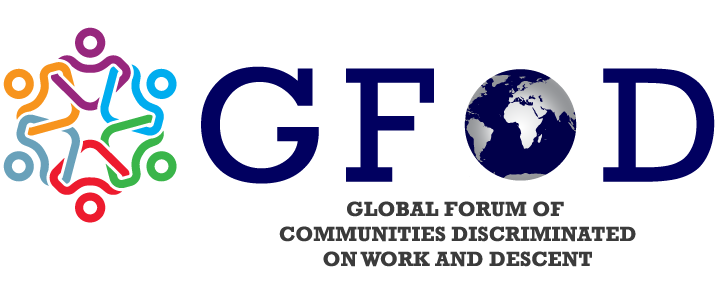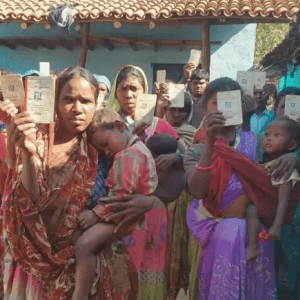2024 elections puts spotlight on what Union Budget will offer to millions of CDWDs in India
The year 2024 is shaping to be a pivotal year not just for India, but for over four dozen countries heading towards elections. In India, the elections to pick the next government are just a couple of months away and that has put an extra spotlight on the Union Budget that was unveiled today.
Last year's Budget proved to be yet another instance where CDWD aspirations, while acknowledged, did not receive due attention. The total allocation for the welfare of the Scheduled Caste stood at Rs. 1,59,126.22 crore while for the Scheduled Tribes, it stood at Rs 1,19,509.87 crore. Out of this, the targeted funds directly for the Dalits came to Rs. 30,475 crore and 24,384 crore for the tribals.
Dalit organisations have been demanding Rs 10,000 crore for the Post Matric Scholarship for a long time now. While the total allocation fell short of the demand, it was encouraging to see an increase in PMS where Rs 6359.14 crore is allocated for the SCs and Rs.1970 crore for STs. Organizations expect the same theme to continue this year.
Similarly, under the Ministry of Women and Child Development, the total allocation for the umbrella schemes called Saksham Anganwadi and Mission Shakti stood at Rs. 20,554 crore of which Rs 5,038 crore was allocated under the welfare for Scheduled Caste women and Rs 2166 crore for the welfare of the Scheduled Tribe women. But when we examined the schemes in the outcome budget, it became clear that there are no physical targets for these and it was not specific to the community.
Despite the pressing need for targeted public welfare schemes to address the systemic injustices and disparities faced by these marginalized groups, a significant portion of the allocated funds were also directed towards irrelevant and general schemes, neglecting the urgent and specific needs of these communities. This happened even though according to NCRB data for 2021, there were about 50,000 crimes and more than 8000 crimes of violence against Dalit Adivasi women However, only Rs 150 crore was set aside to combat atrocities against Dalit women out of the total Rs 500 crore allocated for the implementation of PoA and PCR Act.
In last year's Budget, there was more focus on infrastructure and less on development plans for SCs and STs. Those advocating for CDWDs called upon the relevant authorities to take immediate action to rectify this situation and ensure that the allocated funds are utilized in a transparent manner for the betterment of Dalit and Adivasi communities. This included measures to ensure the funds are directed towards implementing specific public welfare schemes that address the specific needs and challenges faced by CDWDs.
But undeterred by years of disappointment, the National Campaign on Dalit Human Rights has been at the forefront of fighting for Communities Discriminated on Work and Descent (CDWD, also known as Dalits) for over two decades now and thanks to their work, we are now more aware than ever about how the Union Budget allocates funds for CDWDs, and why the funds meant to improve the lives of CDWDs often end up getting diverted for non-CDWD causes.
On the eve of the Union Budget, GFOD sat down for a conversation with Beena Pallical, the General Secretary of Dalit Arthik Adhikar Andolan and a coordinator for the National Coalition of SCP TSP Legislation and Chairperson of Asia Dalit Rights Forum, to speak about the NCDHR's expectations from the budget, the current scenario, and how to increase awareness on these matters.
1. While every budget is important for CDWD and other marginalised communities, we cannot ignore the fact that this is also the election year. With that in mind, do you think your expectations are any different than the previous years and if yes, how?
We must remember that the Union Budget is a reflection of the priorities of a particular government. With that in mind, the Union budget becomes extremely critical and important for us because anything that we need: from housing to livelihood needs money (and the Union Budget is the first step in this regard). From the perspective of the CDWD, it is important that we keep track of this.
We have come a long way in this regard: back when we started our work, they (the policymakers) would say things like ‘Oh, how come Dalits can read the Budget' but now things have improved, and thankfully, for the better.
Yes, this year it's more important for us because since this is the election year, there will be more election goodies in the budget. I think it's critical for us to monitor that and to keep track between now and when the Union Budget is presented again (since this will be an interim Budget), so we will keep an eye on the differences.
2. What have been your past experiences when it comes to understanding, analysing and breaking down the budget concerning the CDWDs, especially from a gender perspective?
Yes, so initially, when we started analysing the Budget, around 2007, there was a lot of backlash because we were asked questions like ‘There's so much violence, why do we want to do budgets? Why do we want to track the budget?'
I remember, 10 years ago, when we did a press conference, not even one person covered it. Things have come a long way now. Not only do we get coverage from various media houses, but we also release at least 10 to 15 publications covering our analysis. We are one of the few, if not the only Dalit organisations which does this, and that too within 24 hours.
I can also now confidently assert that our analysis is followed not just by the public but also by policymakers, Members of Parliaments and various scholars. You know, Niti Ayog (Planning Commission) follows our analysis, so somewhere, we can say the policymakers are aware that this work is being done. The visibility we have now gives us a lot of strength to continue to do the work that we do and of course, to the community we have trained over the years.
3. We have noticed that even when the allocation aspect of the budget for CDWDs is met, the implementation leaves a lot to be desired. We have also seen that funds are diverted to schemes that have little or nothing to do with CDWDs. How do we ensure this does not happen and what schemes and laws, according to you, require the most urgent attention of the government with regard to CDWDs?
Here's the thing. We can do very little (about the diversion). From our end, our primary capability lies in raising awareness about existing gaps and advocating for necessary changes. We can push the government to reallocate funds in the upcoming budget, removing schemes that don't benefit the community and emphasising those that do. However, a more lasting solution, sought by organisations like NCDHR, involves transforming the existing policy into law. Currently known as the Welfare for Scheduled Castes and Scheduled Tribes (SC/ST) in the budget, the demand is to formalise it into a law, ensuring stringent legal measures. This would enable accountability and repercussions if budgetary allocations deviate from their intended purpose.
Speaking about urgent attention, India already has well-crafted laws, such as the Prevention of Atrocities Act, the Elimination of Manual Scavenging Act, and policies like SCPT. The crucial task now is effective implementation. Prioritising the Elimination of Manual Scavenging Act and the Prevention of Atrocities Act is vital. This includes ensuring prompt trials for violent incidents, functioning special courts, and establishing safe houses for affected women. Addressing the issue of manual scavenging, especially involving women, is imperative. The goal is to eliminate this practice entirely, providing dignified job opportunities, and protecting workers, both male and female, from hazardous conditions. In summary, focusing on implementing and reinforcing existing laws is critical for meaningful, sustainable, and enduring changes in the lives of marginalised communities.
4. We have also noticed that at least among the CDWDs, despite your best efforts, there is still a huge lack of awareness among the community about the “money” meant for their upliftment. What can we do more to ensure increased awareness among people?
Several Dalit organisations, including NCDHR, are actively involved in grassroots efforts. NCDHR, for instance, conducts training not only for NGOs but also for community members, including PRI (Panchayati Raj Institutions) representatives. These efforts aim to educate them about budgeting and their role in ensuring that allocated funds reach the community. Similarly, other organisations focus on scavenging in migrant populations.
On the ground, various initiatives are underway to empower communities by providing knowledge about their rights. Training programs cover legal mechanisms, budgeting, and accessing livelihood opportunities.
NCDHR, along with other human rights organisations, has collectively trained over 5,000 human rights defenders. This ensures that individuals understand the mechanisms in place.
Continuing these capacity-building measures, both at the grassroots level and within organisations, remains crucial. The goal is to keep communities informed about their rights. The widespread awareness owes much to numerous small organisations in different states. While it's challenging to name them all due to time constraints, acknowledging the efforts of Adivasi organisations on the ground is essential. These organisations play a significant role in making legal mechanisms, budgetary processes, and other important information accessible to the people, enabling them to demand and access their rights.


